Diverse Background Info, Tidbits, and Esoterica
Moderator: Lammomedes
-
Lammomedes
- Keeper

- Posts: 626
- Registered for: 17 years 8 months
- 17
- Location: Florida
- Contact:
Diverse Background Info, Tidbits, and Esoterica
Some currency info:
An anna is a small unit of Indian currency. 16 anna = 1 rupee.
A paisa is another small unit of Indian currency.4 paisa = 1 anna, 64 paisa = 1 rupee.
A lakh is equal to 100,000 rupees. A term also used to refer to any exorbitant amount of money.
Roughly 1 rupee is equal to 1/10th of a pound sterling, or about 2 shillings.
Terminology:
Anglo-Indian: The term the British use for anyone residing in India for an extended period of time.
Eurasian: A derogatory term for anyone of mixed Indian and English ancestry.
Griffin: A term used for an English newcomer to India.
Memsahib: A term used to address an English or European woman
Nabob: Any Englishman who earned a fortune in India and then returned home to the British Isles
Nawab: Not to be confused with a nabob, a Nawab is a term for an Muslim ruler in India
Raja/Maharaja: A term used for a Hindu ruler in India. A maharaja is higher in status than a raja
Sahib: A term used to address an English or European man, often of higher status
Sepoy: A native Indian infantry soldier
Sowar: A native Indian cavalry soldier
Tiffin: A midday meal, the largest enjoyed in India, often taken outdoors
-wallah: A suffix used for any Indian or European involved in a trade. e.g. A punkah-wallah is an fan operator (a punkah is a ceiling fan)
An anna is a small unit of Indian currency. 16 anna = 1 rupee.
A paisa is another small unit of Indian currency.4 paisa = 1 anna, 64 paisa = 1 rupee.
A lakh is equal to 100,000 rupees. A term also used to refer to any exorbitant amount of money.
Roughly 1 rupee is equal to 1/10th of a pound sterling, or about 2 shillings.
Terminology:
Anglo-Indian: The term the British use for anyone residing in India for an extended period of time.
Eurasian: A derogatory term for anyone of mixed Indian and English ancestry.
Griffin: A term used for an English newcomer to India.
Memsahib: A term used to address an English or European woman
Nabob: Any Englishman who earned a fortune in India and then returned home to the British Isles
Nawab: Not to be confused with a nabob, a Nawab is a term for an Muslim ruler in India
Raja/Maharaja: A term used for a Hindu ruler in India. A maharaja is higher in status than a raja
Sahib: A term used to address an English or European man, often of higher status
Sepoy: A native Indian infantry soldier
Sowar: A native Indian cavalry soldier
Tiffin: A midday meal, the largest enjoyed in India, often taken outdoors
-wallah: A suffix used for any Indian or European involved in a trade. e.g. A punkah-wallah is an fan operator (a punkah is a ceiling fan)
-
Lammomedes
- Keeper

- Posts: 626
- Registered for: 17 years 8 months
- 17
- Location: Florida
- Contact:
Re: Diverse Background Info, Tidbits, and Esoterica
Some Important Geographical and Political Information for the Discerning Reader:
Bengal in eastern India is the seat of the British East India Company's power, and the center of that is the city of Calcutta. Eastern India's landscape is often a mix of forest, subtropical jungle and mangrove swamp, especially around the mouths of rivers. The temperatures are extremely hot and humid for much of the year, and the region is prone to devastating monsoons. However, the land is extremely fertile and is the heart of Indian rice and tea production. It is also the gateway to Burma. Further to the north and to the northwest, closer to the Himalayas, the weather is much more temperate and some areas, even in the 1850s, are scarcely explored and barely settled.
Calcutta is the largest city and most populated city in India, with nearly 650,000 people. The holy city of Benares, along the Ganges river, is also in Bengal, a pilgrimage site for many Hindus. Darjeeling, higher in the hills of northern Bengal, is the summer capital for the English and European residents of Bengal.
Oudh is a recently conquered region to the west of Bengal. Because of its closeness to the Maratha/Mughal Empire, the British East India Company were reluctant to outright conquer the region. From 1801-1856, Oudh/Awadh was a buffer state between the Bengal Presidency and the Mughal Empire. However, the British Resident in Lucknow ran the show, aided by an army under his control, staffed by British officers, but recruited from Oudh. By the middle 19th century the nawabs of Oudh were all show: pomp and circumstance, extremely wealthy, but with little real political power. In 1856, Sir Henry Lawrence decided to annex the region, moving British and Indian troops to the border and then seizing the throne. The Nawab of Oudh, Wajid Ali Shah, who was depicted by the British in their propaganda as decadent and corrupt, was imprisoned and then sent to Calcutta in exile. The city of Lucknow, as with the Nawabs before, remained the center of British rule in this region.
Lucknow and the region around the city has a warm humid subtropical climate with cool, dry winters from December to February and dry, hot summers from April to June. The rainy season is from mid-June to mid-September, when Lucknow gets an average rainfall of 896.2 millimetres (35.28 in) from the south-west monsoon winds, and occasionally frontal rainfall will occur in January. In winter the maximum temperature is around 25 °C (77 °F) and the minimum is in the 2 to 3 degrees Celsius range. Fog is quite common from late December to late January. Summers are extremely hot with temperatures rising to the 40 to 45 degree Celsius range, the average highs being in the high 30's.
Lucknow is a market town for mangoes, melons, and grains grown in the surrounding areas. Sugarcane-growing plantations and sugar industries are also in close proximity. This attracted Edward Dyer to set up a distillery based on molasses in the city and a beer brewery elsewhere in the province in the late 1840s. Dyer Breweries was incorporated in 1855 and was India's first commercial brewery, producing a lager known as Lion which was drunk throughout northern India, from the Punjab to Bengal. Lucknow is also famous for kite manufacturing, as well as cotton manufacturing, including two unique styles of embroidery, namely, Chikan and Lakhnawi Zardozi. Chikan is a type of white-on-white (or whitework) embroidery while Zardozi is sewing with gold thread or gold string.
Bengal in eastern India is the seat of the British East India Company's power, and the center of that is the city of Calcutta. Eastern India's landscape is often a mix of forest, subtropical jungle and mangrove swamp, especially around the mouths of rivers. The temperatures are extremely hot and humid for much of the year, and the region is prone to devastating monsoons. However, the land is extremely fertile and is the heart of Indian rice and tea production. It is also the gateway to Burma. Further to the north and to the northwest, closer to the Himalayas, the weather is much more temperate and some areas, even in the 1850s, are scarcely explored and barely settled.
Calcutta is the largest city and most populated city in India, with nearly 650,000 people. The holy city of Benares, along the Ganges river, is also in Bengal, a pilgrimage site for many Hindus. Darjeeling, higher in the hills of northern Bengal, is the summer capital for the English and European residents of Bengal.
Oudh is a recently conquered region to the west of Bengal. Because of its closeness to the Maratha/Mughal Empire, the British East India Company were reluctant to outright conquer the region. From 1801-1856, Oudh/Awadh was a buffer state between the Bengal Presidency and the Mughal Empire. However, the British Resident in Lucknow ran the show, aided by an army under his control, staffed by British officers, but recruited from Oudh. By the middle 19th century the nawabs of Oudh were all show: pomp and circumstance, extremely wealthy, but with little real political power. In 1856, Sir Henry Lawrence decided to annex the region, moving British and Indian troops to the border and then seizing the throne. The Nawab of Oudh, Wajid Ali Shah, who was depicted by the British in their propaganda as decadent and corrupt, was imprisoned and then sent to Calcutta in exile. The city of Lucknow, as with the Nawabs before, remained the center of British rule in this region.
Lucknow and the region around the city has a warm humid subtropical climate with cool, dry winters from December to February and dry, hot summers from April to June. The rainy season is from mid-June to mid-September, when Lucknow gets an average rainfall of 896.2 millimetres (35.28 in) from the south-west monsoon winds, and occasionally frontal rainfall will occur in January. In winter the maximum temperature is around 25 °C (77 °F) and the minimum is in the 2 to 3 degrees Celsius range. Fog is quite common from late December to late January. Summers are extremely hot with temperatures rising to the 40 to 45 degree Celsius range, the average highs being in the high 30's.
Lucknow is a market town for mangoes, melons, and grains grown in the surrounding areas. Sugarcane-growing plantations and sugar industries are also in close proximity. This attracted Edward Dyer to set up a distillery based on molasses in the city and a beer brewery elsewhere in the province in the late 1840s. Dyer Breweries was incorporated in 1855 and was India's first commercial brewery, producing a lager known as Lion which was drunk throughout northern India, from the Punjab to Bengal. Lucknow is also famous for kite manufacturing, as well as cotton manufacturing, including two unique styles of embroidery, namely, Chikan and Lakhnawi Zardozi. Chikan is a type of white-on-white (or whitework) embroidery while Zardozi is sewing with gold thread or gold string.
Re: Diverse Background Info, Tidbits, and Esoterica
Would passenger ships from Britain dock in Calcutta?
"Two in the head, you know he's dead." <heh>
-
Lammomedes
- Keeper

- Posts: 626
- Registered for: 17 years 8 months
- 17
- Location: Florida
- Contact:
Re: Diverse Background Info, Tidbits, and Esoterica
Until the opening of the Suez Canal, almost all ships arriving in India that are carrying Europeans dock first in Calcutta. Since this is the heart of British and EIC control over India, it is the logical port for ships to arrive in first and its considered the main port of entry for British officials in India. Once the Suez Canal opens, travel switches to Bombay and that city becomes the main port of entry.Gaffer wrote:Would passenger ships from Britain dock in Calcutta?
In fact, as an odd trivia fact, once the Suez Canal opens it is cheaper to ship coal from Yorkshire to India than it is to ship coal from Calcutta to Bombay.
-
Lammomedes
- Keeper

- Posts: 626
- Registered for: 17 years 8 months
- 17
- Location: Florida
- Contact:
Re: Diverse Background Info, Tidbits, and Esoterica
Map of the city of Calcutta, 1859. This map is actually zoomable.
http://www.davidrumsey.com/luna/servlet ... mi=0&trs=1
Map of Calcutta, 1857
http://ids.lib.harvard.edu/ids/view/106 ... 016&html=y
http://www.davidrumsey.com/luna/servlet ... mi=0&trs=1
Map of Calcutta, 1857
http://ids.lib.harvard.edu/ids/view/106 ... 016&html=y
-
Lammomedes
- Keeper

- Posts: 626
- Registered for: 17 years 8 months
- 17
- Location: Florida
- Contact:
Re: Diverse Background Info, Tidbits, and Esoterica
Firearms:
The 1850s see extensive use of percussion cap based firearms. While older flintlock weapons are still found throughout India, the most modern weapons are percussion weapons, including the first revolvers that are appearing. Pepperbox weapons, usually all pistols, are the first attempt at multiple shot weapons, and they still widely popular up to 1860 or so. While many of these pistols are four barreled, there are pepperbox "hand cannons" with as many as 7 or 8 shots in them. All are quite heavy and usually have some massive recoil.
This website contains a collection of weapons (all pistols and revolvers) found in the Melbourne, Australia gold fields of the 1850s, so most of these weapons would be found in India as well. It is an excellent resource for pictures of pistols, early revolvers, and some unique handguns etc.
http://museumvictoria.com.au/collection ... 0s?start=1
British handgun manufactures included: Adams, Tranter and Webley. The Webley Longspur revolver, introduced in 1853, was hand crafted and perhaps one of the best revolvers of the day, firing five .44 caliber rounds. But it never could compete with the mass produced revolvers from America and from either Adams or Tranter companies.
https://cdn.shptrn.com/media/mfg/4371/m ... 1303288584
The British military are using the Enfield 1851 or 1853 pattern percussion rifled musket. The 1853 rifle was starting to appear in large numbers in India in 1856/1857 and its use of a greased paper cartridge containing powder and a Minie ball, may have been a significant cause of the eventual Mutiny. Note, though, that the 1851 rifle uses a .702" round, while the 1853 uses a .577" round, which means that ammunition is incompatible between weapons.
Indian rebels and many Indian sepoys are still using the Pattern 1839 smoothbore musket, which is essentially the old .75 caliber Brown Bess or Indian Pattern musket (used by British troops from 1722-1838) converted from a flintlock to a percussion cap based firing system. This weapon is being phased out and replaced with surplus Crimean War issued Pattern 1853 percussion rifles at the end of 1856. However, tens of thousands of these weapons remain in military storehouses throughout India.
The main British military revolver was the Dean-Adams Improved Frame Model 1854, a double action weapon compared to the Colt Single Action weapons of the period. It was also uniquely hammerless and the improved frame made significant safety improvements to the early model. It was also a five shot, .44 caliber weapon. In 1856, the British Army adopted the Beaumont-Adams revolver, a .44 caliber, five shot revolver. This weapon was quite popular with British officers heading off to the Crimea. The weapon was so popular in Britain that it temporarily but Samuel Colt's firearm factory out of business in England!
The 1850s see extensive use of percussion cap based firearms. While older flintlock weapons are still found throughout India, the most modern weapons are percussion weapons, including the first revolvers that are appearing. Pepperbox weapons, usually all pistols, are the first attempt at multiple shot weapons, and they still widely popular up to 1860 or so. While many of these pistols are four barreled, there are pepperbox "hand cannons" with as many as 7 or 8 shots in them. All are quite heavy and usually have some massive recoil.
This website contains a collection of weapons (all pistols and revolvers) found in the Melbourne, Australia gold fields of the 1850s, so most of these weapons would be found in India as well. It is an excellent resource for pictures of pistols, early revolvers, and some unique handguns etc.
http://museumvictoria.com.au/collection ... 0s?start=1
British handgun manufactures included: Adams, Tranter and Webley. The Webley Longspur revolver, introduced in 1853, was hand crafted and perhaps one of the best revolvers of the day, firing five .44 caliber rounds. But it never could compete with the mass produced revolvers from America and from either Adams or Tranter companies.
https://cdn.shptrn.com/media/mfg/4371/m ... 1303288584
The British military are using the Enfield 1851 or 1853 pattern percussion rifled musket. The 1853 rifle was starting to appear in large numbers in India in 1856/1857 and its use of a greased paper cartridge containing powder and a Minie ball, may have been a significant cause of the eventual Mutiny. Note, though, that the 1851 rifle uses a .702" round, while the 1853 uses a .577" round, which means that ammunition is incompatible between weapons.
Indian rebels and many Indian sepoys are still using the Pattern 1839 smoothbore musket, which is essentially the old .75 caliber Brown Bess or Indian Pattern musket (used by British troops from 1722-1838) converted from a flintlock to a percussion cap based firing system. This weapon is being phased out and replaced with surplus Crimean War issued Pattern 1853 percussion rifles at the end of 1856. However, tens of thousands of these weapons remain in military storehouses throughout India.
The main British military revolver was the Dean-Adams Improved Frame Model 1854, a double action weapon compared to the Colt Single Action weapons of the period. It was also uniquely hammerless and the improved frame made significant safety improvements to the early model. It was also a five shot, .44 caliber weapon. In 1856, the British Army adopted the Beaumont-Adams revolver, a .44 caliber, five shot revolver. This weapon was quite popular with British officers heading off to the Crimea. The weapon was so popular in Britain that it temporarily but Samuel Colt's firearm factory out of business in England!
Re: Diverse Background Info, Tidbits, and Esoterica
I was thinking Dodgson would have a pepperbox revolver

and a scattergun (as he's a civilian).

I think a revolver is a bit beyond him at present.
If he can find a howdah pistol in a bazaar and a few shells,
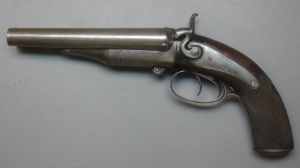
he'd be inclined to purchase it, if it seems in good repair. As much in celebration of the one Diana put to such good use, as for any practical use.

and a scattergun (as he's a civilian).

I think a revolver is a bit beyond him at present.
If he can find a howdah pistol in a bazaar and a few shells,

he'd be inclined to purchase it, if it seems in good repair. As much in celebration of the one Diana put to such good use, as for any practical use.
"Two in the head, you know he's dead." <heh>
-
Lammomedes
- Keeper

- Posts: 626
- Registered for: 17 years 8 months
- 17
- Location: Florida
- Contact:
Re: Diverse Background Info, Tidbits, and Esoterica
Gaffer,
I'll say you can find a Howdah pistol, which is in decent repair, plus a dozen rounds worth of ammo and powder for about 1 pound and 6 shillings in one of the main markets of Calcutta. It's made by a local firm, based off an existing European model, and it has been converted to a percussion cap mechanism recently.
The other weapons are fine.
I'll say you can find a Howdah pistol, which is in decent repair, plus a dozen rounds worth of ammo and powder for about 1 pound and 6 shillings in one of the main markets of Calcutta. It's made by a local firm, based off an existing European model, and it has been converted to a percussion cap mechanism recently.
The other weapons are fine.
-
Lammomedes
- Keeper

- Posts: 626
- Registered for: 17 years 8 months
- 17
- Location: Florida
- Contact:
Re: Diverse Background Info, Tidbits, and Esoterica
This is an excellent zoom based map of Calcutta in 1858.
Spend some time playing around with it...its quite creative.
http://rumsey.geogarage.com/maps/gct001 ... 35&zoom=13
Spend some time playing around with it...its quite creative.
http://rumsey.geogarage.com/maps/gct001 ... 35&zoom=13
- Philulhu
- Keeper

- Posts: 7596
- Registered for: 17 years 10 months
- 17
- Location: Derbyshire, England
- Contact:
Re: Diverse Background Info, Tidbits, and Esoterica
As a Ensign in the British Army, Granville will have the standard kit of the day, the Adams revolver and the Enfield 1853 rifle.
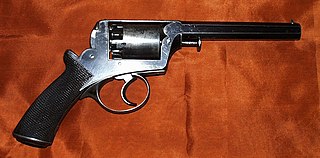



Re: Diverse Background Info, Tidbits, and Esoterica
Most of Thomas' limited funds goes on horses (expensive beasts!). He picked up a Colt 1851 London Model fairly cheap a few years ago. He will also have a light cavalry sabre, and possibly a pig-sticking lance.




Re: Diverse Background Info, Tidbits, and Esoterica
Hope you don't mind me interjecting, but an ensign although the lowest rank of commissioned officer were still officers. As an officer, however junior the rank, Granville would not carry a rifle it simply wasn't the done thing. An officer commands he does not fight (this is done by common men) and in practical terms you can't hold the regimental colours and fire a rifle at the same time.
This is not to say Granville wouldn't have a rifle (its India and whats a young offiver to do with all the spare time but go hunting!) just I doubt it would be an issue one, as this would be looked upon rather poorly (is he so poor he can't afford his own?).
Issue kit would probably also include an In 1845 pattern infantry sword by Wilkinson, slightly curved the blade is designed for cut-and-thrust work rather than the curved slashing blade of a sabre as issued to cavalry officers.
Oh and as an afterthought Granville should also have a batman although the term "orderly" was more widely accepted int he Indian Army, as a junior officer Granville might be expected to share the orderly with other junior officers. (He wont have the orderly until he joins the regiment however.)
The orderly would be expected to work as a valet maintaining the officer's uniform and personal equipment as well as any tasks the officer does not have time or inclination to do.
Again, apologies if this interjection is unwanted.
Cheers
Giles
Formerly Queens Ensign (2nd Lt) for the 3rd Battalion the Royal Regiment of Fusiliers
This is not to say Granville wouldn't have a rifle (its India and whats a young offiver to do with all the spare time but go hunting!) just I doubt it would be an issue one, as this would be looked upon rather poorly (is he so poor he can't afford his own?).
Issue kit would probably also include an In 1845 pattern infantry sword by Wilkinson, slightly curved the blade is designed for cut-and-thrust work rather than the curved slashing blade of a sabre as issued to cavalry officers.
Oh and as an afterthought Granville should also have a batman although the term "orderly" was more widely accepted int he Indian Army, as a junior officer Granville might be expected to share the orderly with other junior officers. (He wont have the orderly until he joins the regiment however.)
The orderly would be expected to work as a valet maintaining the officer's uniform and personal equipment as well as any tasks the officer does not have time or inclination to do.
Again, apologies if this interjection is unwanted.
Cheers
Giles
Formerly Queens Ensign (2nd Lt) for the 3rd Battalion the Royal Regiment of Fusiliers
Last edited by ghill on Sat Nov 26, 2011 8:45 pm, edited 4 times in total.
-
Lammomedes
- Keeper

- Posts: 626
- Registered for: 17 years 8 months
- 17
- Location: Florida
- Contact:
Re: Diverse Background Info, Tidbits, and Esoterica
These are weapon stats from the Mysteries of the Raj sourcebook, Cthulhu by Gaslight, and Cthulhu by Gaslight Equipment Guide.
Howdah Pistol (.577), 15% base, 3d4 damage, 5 yds base range (they are basically oversize shotgun pistols), attacks 1 or 2, ammo 1 or 2, reload 1/2 rounds (2 rounds per barrel).
Rifled Musket (.577), 25% base, 4d4+1 damage, 60 yards range, attacks 1, ammo 1, reload 1/4 rounds
Service Revolver (.44), 20% base, 1d10+2 damage, 20 yards range, attacks 1, ammo 5, reload 1 round per chamber (6 rounds total)
Cavalry Lance 10%, 1d8+1 (+1d6 from horseback) damage, 15 hit points
Howdah Pistol (.577), 15% base, 3d4 damage, 5 yds base range (they are basically oversize shotgun pistols), attacks 1 or 2, ammo 1 or 2, reload 1/2 rounds (2 rounds per barrel).
Rifled Musket (.577), 25% base, 4d4+1 damage, 60 yards range, attacks 1, ammo 1, reload 1/4 rounds
Service Revolver (.44), 20% base, 1d10+2 damage, 20 yards range, attacks 1, ammo 5, reload 1 round per chamber (6 rounds total)
Cavalry Lance 10%, 1d8+1 (+1d6 from horseback) damage, 15 hit points
-
Lammomedes
- Keeper

- Posts: 626
- Registered for: 17 years 8 months
- 17
- Location: Florida
- Contact:
Re: Diverse Background Info, Tidbits, and Esoterica
The Viscount Canning, Governor-General of India
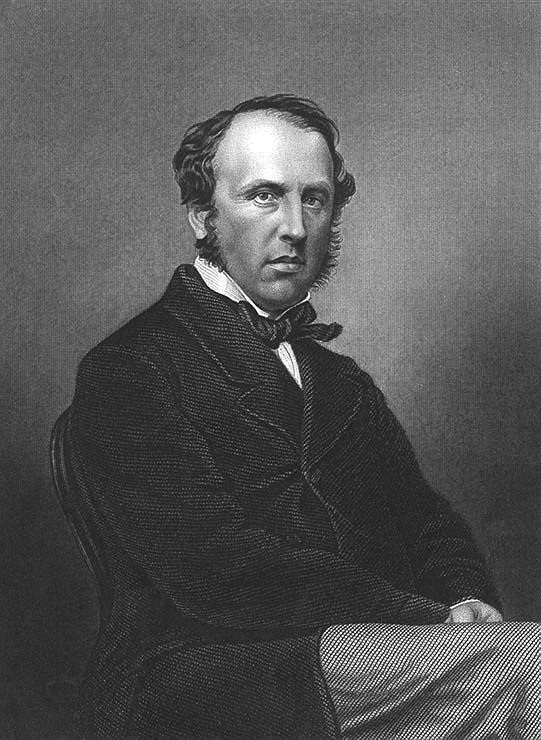
Sir Richard Talbot, Private Secretary to the Governor-General
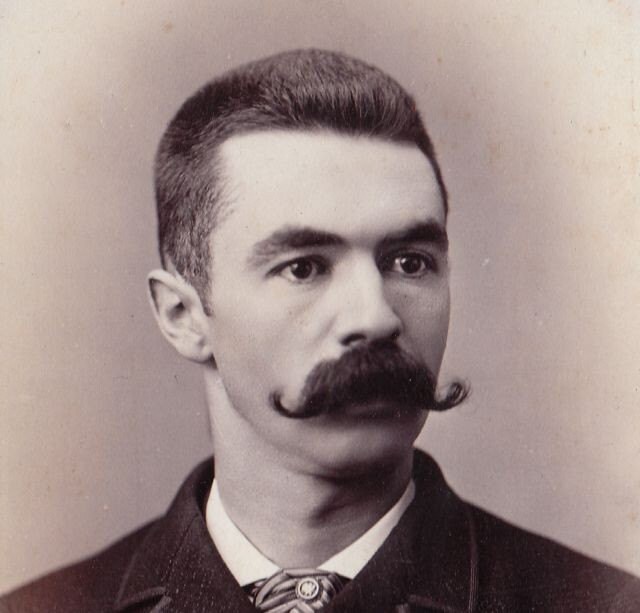

Sir Richard Talbot, Private Secretary to the Governor-General

- Philulhu
- Keeper

- Posts: 7596
- Registered for: 17 years 10 months
- 17
- Location: Derbyshire, England
- Contact:
Re: Diverse Background Info, Tidbits, and Esoterica
Nope, it's much appreciatedghill wrote:Hope you don't mind me interjecting, but an ensign although the lowest rank of commissioned officer were still officers. As an officer, however junior the rank, Granville would not carry a rifle it simply wasn't the done thing. An officer commands he does not fight (this is done by common men) and in practical terms you can't hold the regimental colours and fire a rifle at the same time.
This is not to say Granville wouldn't have a rifle (its India and whats a young offiver to do with all the spare time but go hunting!) just I doubt it would be an issue one, as this would be looked upon rather poorly (is he so poor he can't afford his own?).
Issue kit would probably also include an In 1845 pattern infantry sword by Wilkinson, slightly curved the blade is designed for cut-and-thrust work rather than the curved slashing blade of a sabre as issued to cavalry officers.
Oh and as an afterthought Granville should also have a batman although the term "orderly" was more widely accepted int he Indian Army, as a junior officer Granville might be expected to share the orderly with other junior officers. (He wont have the orderly until he joins the regiment however.)
The orderly would be expected to work as a valet maintaining the officer's uniform and personal equipment as well as any tasks the officer does not have time or inclination to do.
Again, apologies if this interjection is unwanted.
Cheers
Giles
Formerly Queens Ensign (2nd Lt) for the 3rd Battalion the Royal Regiment of Fusiliers
Granville's not particularly wealthy, but he should be able to spring for a hunting rifle, instead of the standard issue. And he'll carry the 1845 sword as well.
Cheers,
Phil.
-
Lammomedes
- Keeper

- Posts: 626
- Registered for: 17 years 8 months
- 17
- Location: Florida
- Contact:
Re: Diverse Background Info, Tidbits, and Esoterica
The entrance to Government House, Calcutta.
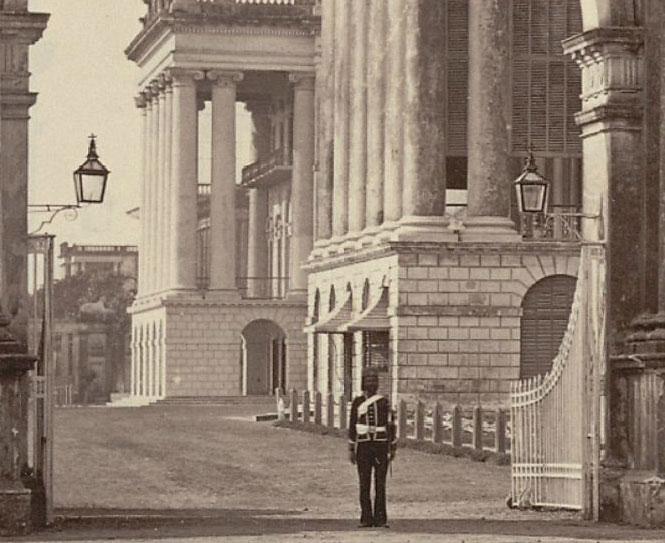
The grand ball room, Government House, Calcutta


The grand ball room, Government House, Calcutta

Re: Diverse Background Info, Tidbits, and Esoterica
Who knew gloves could be so complicated?
Very interesting, thanks.
Who is online
Users browsing this forum: No registered users and 2 guests
